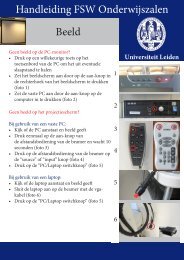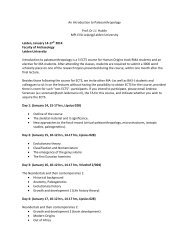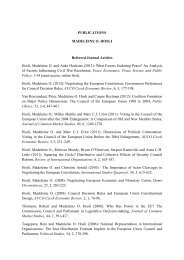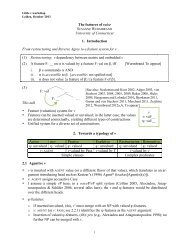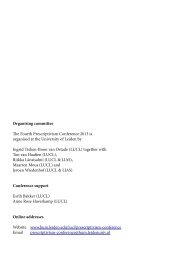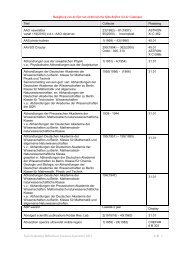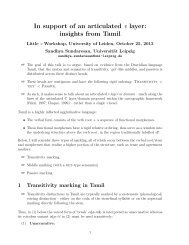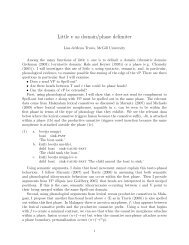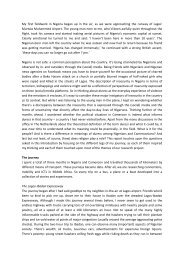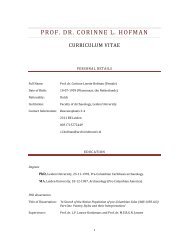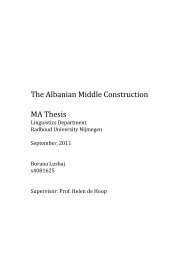Programme
Programme
Programme
You also want an ePaper? Increase the reach of your titles
YUMPU automatically turns print PDFs into web optimized ePapers that Google loves.
The lengthened grade in the nominative singular<br />
Martin Joachim Kümmel, Friedrich-Schiller-Universität Jena<br />
The lengthened grade sometimes appears in single forms of nominal paradigms, the best<br />
established case being the nominative singular of athematic paradigms. However, the<br />
explanation of the phenomenon is controversial: One approach assumes that the lengthening<br />
originally came up in forms where *-s was lost after resonants ( “Szemerényi’s law”) and was<br />
only later taken over by other stems (cf., e.g., Szemerényi 1970: 109ff.). Other approaches<br />
doubt such a connexion to the loss of *-s: Rasmussen (1978: 74-79; 1989: 139-142, 251ff.)<br />
assumed a lengthening effect of the original nominative ending **-z, while Beekes (1985:<br />
151-164) rejects any connection with the ending *-s and assumes two different sources:<br />
lengthening before final resonants in originally s-less nominatives, and lengthening in<br />
monosyllables.<br />
For the assessment of the different approaches it is important to keep in mind what<br />
data the reconstructed distribution is based upon. Some reconstructions crucially depend on a<br />
lengthened grade attested in Indo-Iranian; e.g., the reconstruction *djḗws ‘sky; day’ is mainly<br />
based on Vedic dyáuṣ. However, the distribution of lengthened grades and full grades in Indo-<br />
Iranian was strongly affected by the effects of Brugmann’s Law turning many o grades into<br />
synchronic lengthened grades. In this paper I will examine the synchronic distribution and<br />
history of long grade and full grade in Indo-Iranian noun inflection and the consequences of<br />
these findings for the reconstruction of the nominative singular in PIE, It will be argued that<br />
these data support the theory that the lengthened grade originally was in complementary<br />
distribution with overt *-s.<br />
References:<br />
Beekes, Robert S. P. (1985). The Origins of the Indo-European Nominal Inflection Innsbruck.<br />
Rasmussen, Jens Elmegård (1978): Zur Morphophonemik des Urindogermanischen. In:<br />
Collectanea Indoeuropaea I, ed. B. Čop et al., Ljubljana, 59-143.<br />
Rasmussen, Jens Elmegård (1989). Studien zur Morphophonemik der indogermanischen<br />
Grundsprache. Innsbruck.<br />
Szemerényi, Oswald (1970). Einführung in die vergleichende Sprachwissenschaft. Darmstadt.<br />
22



